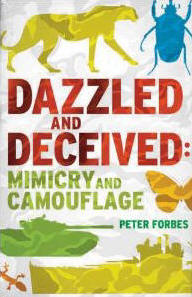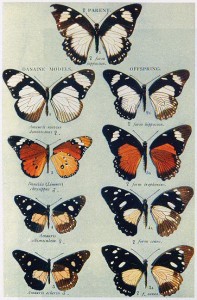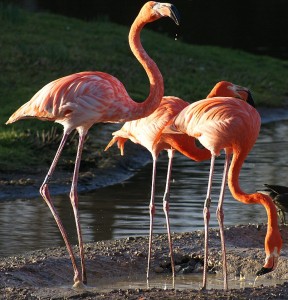
The effect of natural selection on how animals look has attracted the
attention of naturalists from the birth of modern natural history, starting even before Darwin’s Origin of Species.
Visual appearance can affect an animal’s survival in numerous ways.
Camouflage makes it hard for predators to find a prey animal; warning coloration advertises that a potential prey is poisonous or distasteful; Batesian mimicry allows an edible species to pretend to be distasteful; and Müllerian mimicry allows a distasteful species to be sampled less often by young inexperienced predators, by resembling a more common distasteful species. And within these areas, there are infinite possibilities.

But as the cover art suggests, Forbes does not stop there. Camouflage has military uses; and the history of two World Wars reveals extraordinary interactions between naturalists like Hugh Cott (author of the greatest twentieth-century book on camouflage, Adaptive Coloration in Animals, 1940) and Peter Scott with the military – Scott was a naval captain, so he had a foot in both camps.
Much of the book concerns the natural history and biology of butterflies – they include many of nature’s best mimics, and provide incredibly complex examples of visual evolution at work, as the mimic species adapts to each of the many geographic variants of the host or model species. It’s even possible for multiple forms to appear in a single brood. Forbes describes the research workers, their controversies and their heated opinions, right or wrong. Truth wins in the end, but that doesn’t prevent a messy process along the way, just as in evolution.
Today, new light is being shed on the mechanisms of mimicry and coloration in general by evolutionary developmental biology, which Forbes insists on calling “evo devo”. The result of such inquiry will one day be an explanation of the observed, very complex, natural history at multiple levels – genetics, developmental biology, visual appearance, and natural selection, all of which will have to fit together exactly. Pieces of the puzzle are becoming clear, as in the genetic and developmental mechanisms for producing eye-spots. These can be “impressionistic” – they do not have to mimic a cat’s face, as long as a wing-flash gives a bird predator an illusion of eyes-suddenly-jumping-out-at-me; for we suppose that birds have
an escape reaction triggered in some such way. Thus the explanation must take into account ecology too – the behaviours of both predator and prey are needed to explain why eyespots evolved.
Forbes can’t resist putting an artistic and literary take on the natural
history and science: Sir Ernst Gombrich the art historian was deeply
fascinated by visual illusion, while novelists like Vladimir Nabokov (a keen naturalist) were intrigued by truth and lies. Sometimes the analogies go rather far from natural history (electronic warfare is a case in point: it may be deception but it certainly isn’t visual). But Forbes is always precise, and invariably entertaining.
Buy it from Amazon.com (commission paid)
Buy it from Amazon.co.uk (commission paid)

